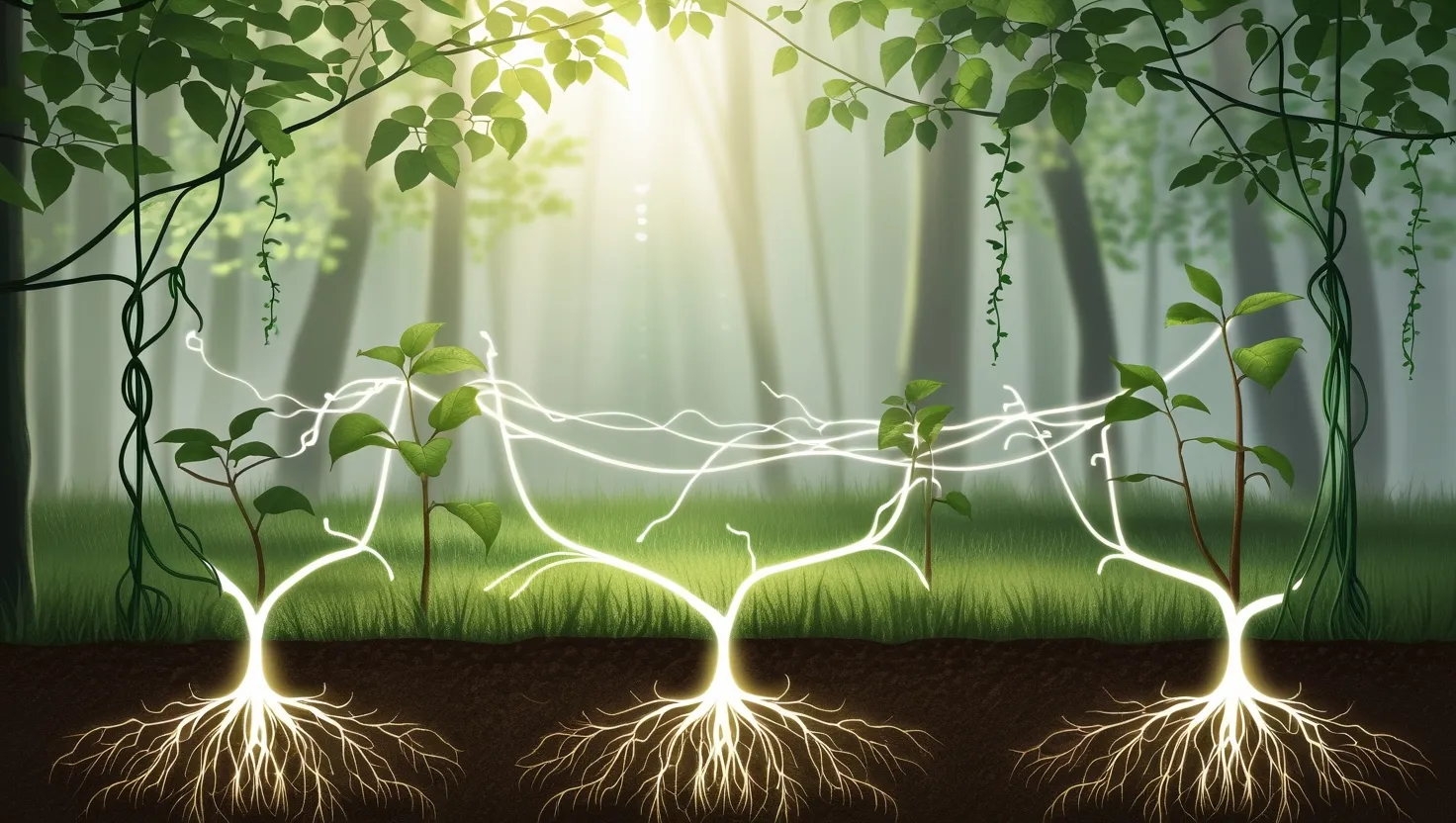If I told you plants act in ways that suggest a kind of intelligence, would you believe me? Most of us picture them as passive fixtures, transformed by sunlight and rain into greenery, but otherwise oblivious to the drama of life around them. Yet when I really pay attention, plants seem to defy their reputation for stillness and simplicity. Their behaviors—even without brains or nerves—rival animals in unexpected ways. Let’s explore six plant abilities that hint at minds much stranger and richer than we ever imagined.
“Nature never hurries. Atom by atom, little by little, she achieves her work.”—Ralph Waldo Emerson
Let’s start with what happens inside a plant when it’s harmed. If you snap a twig or nibble a leaf, something remarkable unfolds. Unlike animals that rely on neurons, plants harness electrical signaling networks—streams of charged particles racing through tissues in response to injury. These signals travel incredibly fast, relaying information from wounded leaves to distant roots. This isn’t just a local response. The entire plant coordinates its defenses, sometimes producing bitter compounds or sending chemical alerts from root to shoot. What’s extraordinarily puzzling is that plants manage this complex command system but don’t have a “brain.” How do they process information using only flows of ions and shifting cell chemistry? The more I read, the more the plant’s internal electrical dialogue feels less automatic reflex and more like primitive decision-making. There’s a real mystery here: are these signals just hardwired responses, or is something like assessment and information integration taking place?
Have you ever thought about how roots behave underground? We rarely see them, but roots form huge communication webs, especially when they share soil with other plants. Most intriguing is the fact that roots can distinguish kin—genetically related plants—from strangers. When roots sense close relatives, their growth patterns change: sometimes they cooperate by sharing resources, other times they compete less aggressively. Why does this matter? It hints at an ability to recognize and “choose” social strategies, something we normally only attribute to animals. This behavior stretches further: roots also send chemical messages—warnings about drought or pest attacks—through networks of fungi that connect entire plant communities. Through the so-called “wood wide web,” information pulses from one plant to another, alerting neighbors and sometimes even helping unrelated individuals. It is as if a forest isn’t just a collection of individuals but a single, coordinated superorganism.
“Look deep into nature, and then you will understand everything better.”—Albert Einstein
Now, consider memory—not the kind you and I know, but an environmental recall that influences how a plant responds over time. Remarkably, plants “remember” stress. For example, a plant that experiences a dry spell will adapt more quickly the next time drought comes. This is not memory in the sense of conscious recollection, but rather in how past experiences alter gene expression and modify the way future threats are handled. Molecularly, it’s about storing chemical marks on DNA or proteins—a kind of biological notepad that helps plants “learn.” Yet animal and plant memories operate through very different architectures. It’s the difference between an elaborate library (the brain) and a field journal sketched on every leaf.
Here’s a question: if you were a plant and something started eating you, could you pick out exactly what was attacking and call for help? Many plants do exactly this. Within minutes of an insect attack, some species identify their assailant and emit specific volatile chemicals—essentially perfumes into the air. These signals aren’t random. Certain compounds attract the predators or parasites of the attacking pests, recruiting allies to defend the plant. What astonishes me isn’t just the speed but the precision. Plants don’t simply cry out for help; they seem capable of threat assessment and a kind of “defense calculus”—calculating the cost and risk of different enemies, and tailoring their response to each. This goes far beyond what most would expect from “mere” vegetation.
“Every flower is a soul blossoming in nature.”—Gerard De Nerval
Watch a climbing vine over days or weeks, and a new picture emerges. Vines aren’t just passively growing—they show proactive, problem-solving behaviors. Experiments with obstacle courses show that vines sense nearby supports and “choose” the optimal path, sometimes even backtracking or changing direction if the path ahead proves difficult. To me, the implication is startling: plants assess their environment, set goals (reach the sunniest spot, find a trellis), and flexibly adjust their growth patterns. Some scientists compare this to animals learning their way through a maze, only the plant moves in slow motion. It raises a question: is this a result of random trial and error, or is there a mechanism for goal-directed behavior?
This leads us to a tangled and controversial subject—the consciousness question. What does it mean to be aware? While science has traditionally reserved consciousness for animals with brains, plants have forced us to reconsider. Their sophisticated sensing, communication, decision-making, and even learning blur boundaries we once thought absolute. Some argue that intelligence requires a mind’s eye; others point to the evidence that plants engage with and modify their world in highly sophisticated, adaptive ways. No one is claiming plants have thoughts or feelings as we do. But perhaps intelligence is broader than our animal way of thinking—perhaps it includes any system that gathers information, predicts, adapts, and remembers.
“To see a world in a grain of sand and a heaven in a wildflower…”—William Blake
I find myself reimagining familiar landscapes. The garden, the forest, even the cracks in city sidewalks—suddenly, I see a community where plants sense, warn, defend, solve, and perhaps even remember. If plants are capable of these feats without a single neuron, maybe intelligence isn’t just the domain of brains, but a property that can emerge in profoundly different architectures. What would it mean for us if other forms of awareness are thriving all around, green and silent, moving to rhythms we are only beginning to hear?
As I walk through the woods or tend to my houseplants, I like to pause and ask: what’s going on beneath those leaves and roots? What networks hum in the background, what chemical conversations fill the air, what tiny calculations are being made with each flicker of sunlight and droplet of rain? If plant intelligence is real—if it exists on a different spectrum than our own—then every garden becomes a gathering of minds, every tree a quiet actor in the dance of life.
So next time you brush past a vine, or watch a leaf tremble in the breeze, consider this: what if that plant is not just alive, but—on its own terms—aware?






